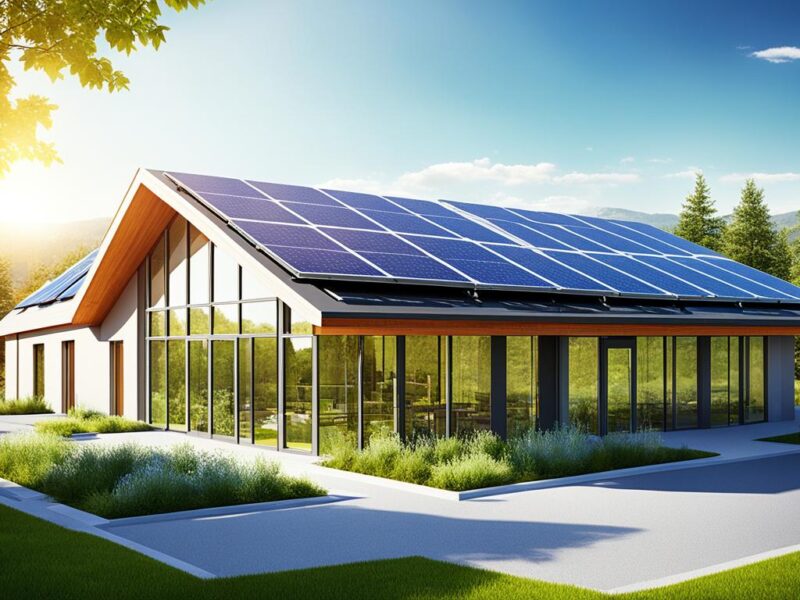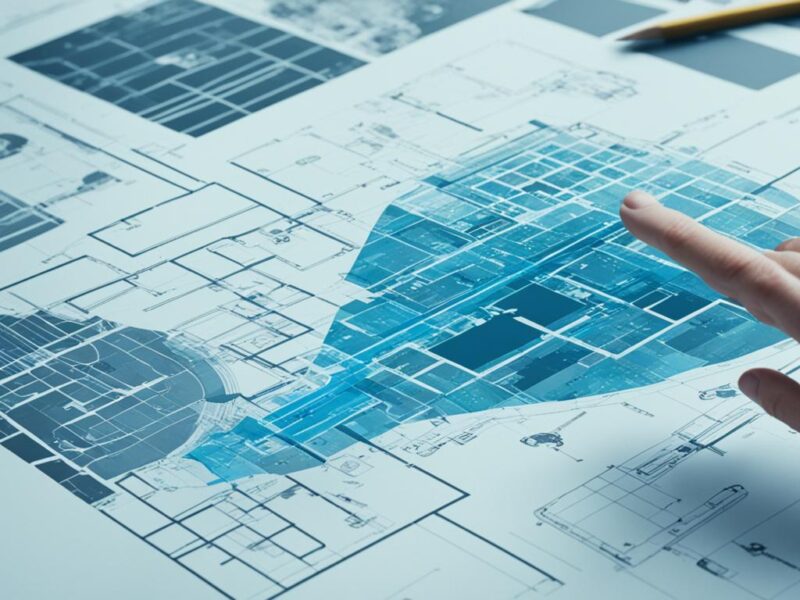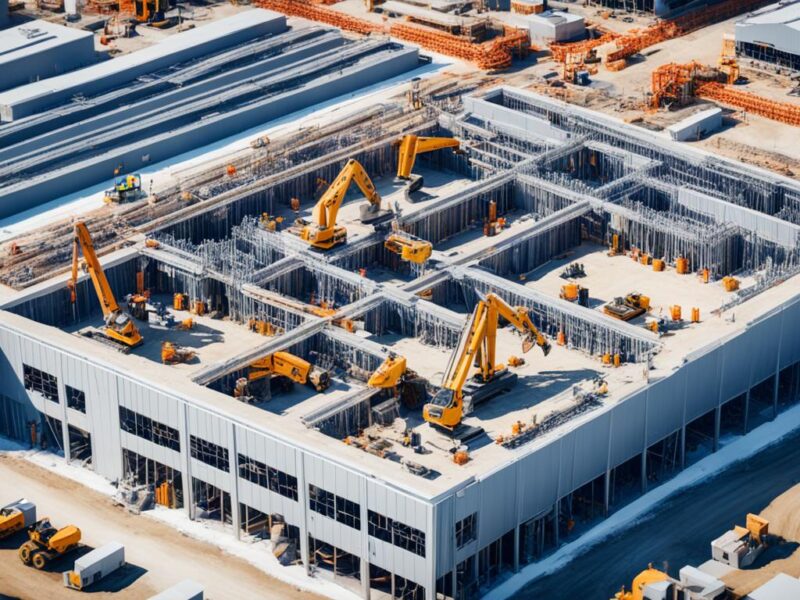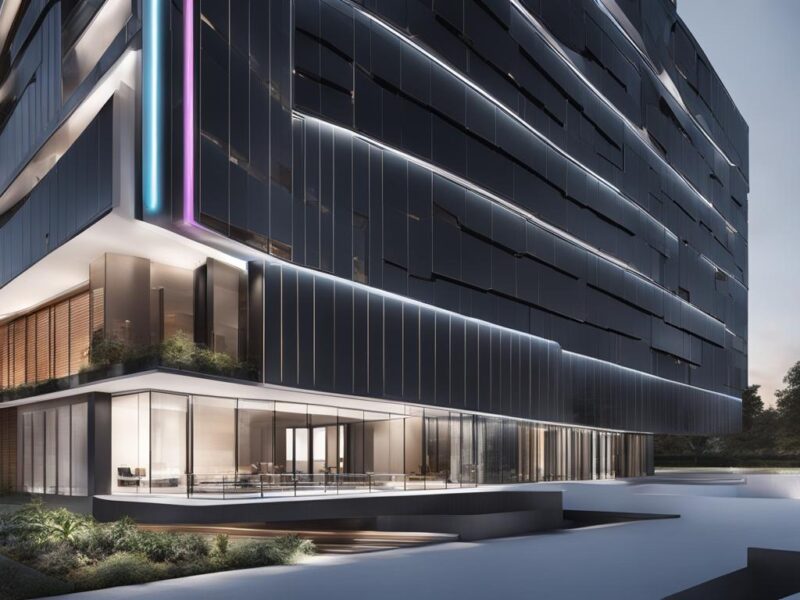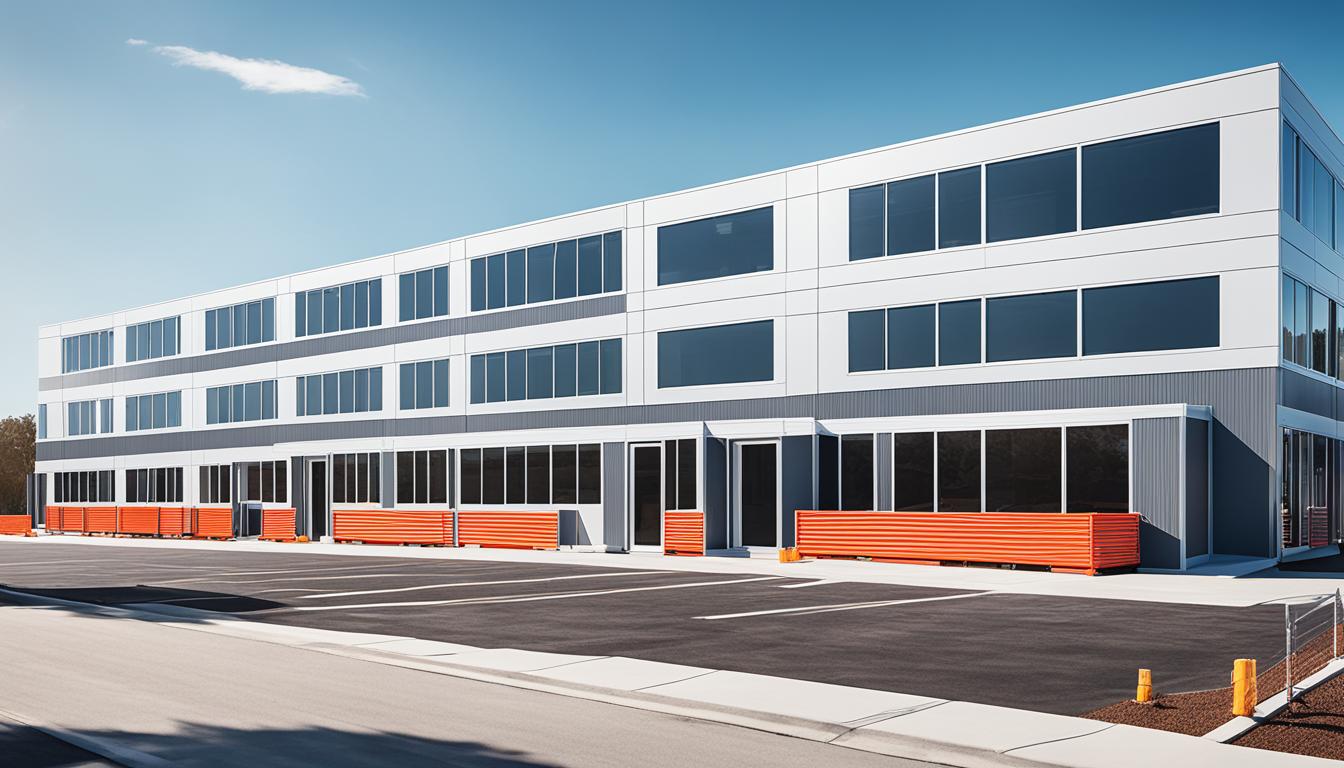
Prefabricated Construction vs. Site-Built Construction: Efficiency and quality on the line.
Did you know that prefabricated construction can save up to 20% on building costs compared to traditional methods? It’s true! This modern approach, also called modular construction, is changing the industry.
It’s known for its efficiency and high quality. Modular buildings take shorter time to complete, often within 6 to 8 weeks. This quick build time and cost savings make modular construction very attractive.
- Prefabricated construction offers cost savings of up to 20% compared to traditional construction.
- Modular buildings can be completed in as little as 6-8 weeks, significantly faster than traditional construction.
- Modular construction reduces the carbon footprint of buildings through the use of sustainable materials and minimized wastage.
- Both prefabricated and traditional construction methods must comply with building codes and regulations to ensure safety and quality.
- Prefabricated construction provides design flexibility and adaptability, allowing for customization and contemporary designs.
The Construction Process: Assembling Parts
The way we build traditional and prefab buildings is quite different. In traditional building, the work starts on the site itself. First, they lay down the foundation. Then, they build the walls and the roof. Prefab or modular construction instead happens mainly in a factory. Here, parts of the building, called modules, are made in a controlled setting.
In a factory, these modules get both their inside and outside finishes. They’re made to exact standards and checked for quality. This ensures they are well-made and consistent. Once finished, these modules are taken to the site. There, they are put together using efficient methods.
To start assembly, prefab modules are fixed to the foundation. They’re held down with steel straps or similar tools. Then, these modules are linked to create a strong structure. Building off-site brings benefits like faster building times. It also means better quality because of the strict controls in the factory.
Both the prefab and traditional methods aim for strong, reliable buildings. Traditional methods build up from a foundation on-site. Prefab methods use modules that are secured to the ground. Each method seeks to ensure that buildings have a solid base.
Prefab construction is about making modules in a factory and then putting them together on-site. This method speeds up construction. It also leads to better quality and more efficient work compared to building everything on-site.
The Construction Process: Assembling Parts
| Construction Process Comparison | Modular Construction | Traditional Construction |
|---|---|---|
| Process | Building parts are constructed off-site in a controlled factory environment as modules. | Building is constructed on-site, starting from the foundation and building up the walls and roof. |
| Finishings | Modules include both interior and exterior finishings. | Finishings are typically applied on-site as the construction progresses. |
| Assembly | Modules are transported to the construction site and anchored to the existing foundation. They are then inter-connected to form the building. | Building components are constructed on-site, starting from the foundation and building up the walls and roof in a sequential process. |
| Quality Control | Modules undergo rigorous quality control measures in the controlled factory environment. | Quality control measures are applied on-site, with inspections conducted during the construction process. |
Using the modular technique, builders enjoy a smoother building process. Thanks to the control in the factory, the precision and quality are high. Also, putting together pre-made modules on-site cuts down on building time. It also lessens delays caused by bad weather.
The prefab construction method is faster and cheaper than traditional ways. Whether it’s because of the factory setting or quick on-site assembly, prefab building excels in efficiency, quality, and strength.
Cost and Time Efficiency
Prefab building is more budget-friendly than old methods. Most of the work is done in a factory, saving money. Using standard parts and avoiding the weather help lower costs.
Choosing modular building can save over 20% in costs. The process is quicker, needing less work and fewer changes on-site.
Modular methods are also faster. Pieces are put together quickly, cutting down time needed. Unlike the 6-16 months for traditional ways, modular can take 6-8 weeks.
“Prefab building changes the game in saving money and time. Because pieces are made ahead, putting them together is fast. This saves a lot for builders,”
– John Smith, Construction Expert
This way, builders work faster and can do more jobs. It helps them make more money.
Prefab building is good for those wanting to work smarter. It helps builders do well in their field.
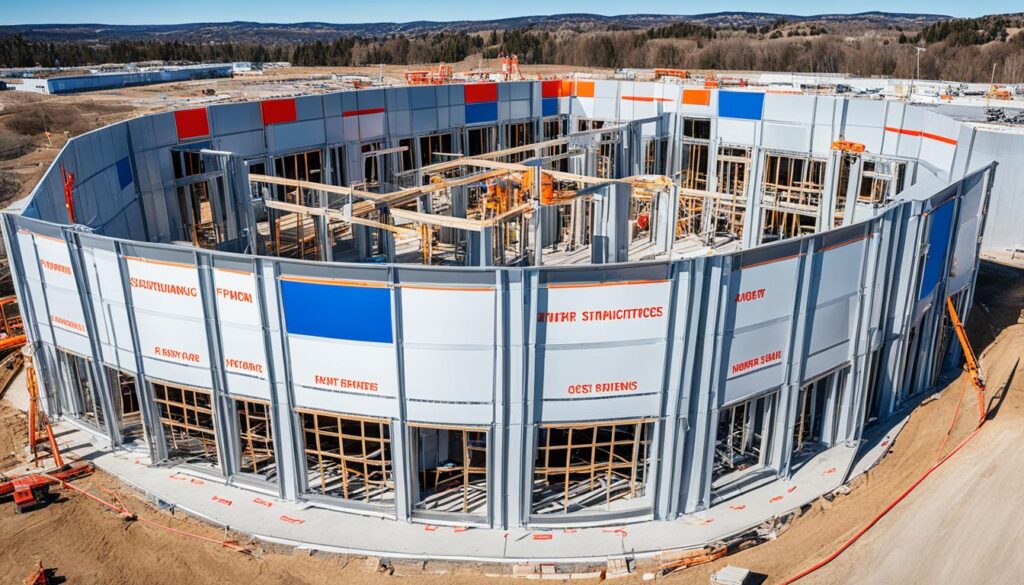
Design Flexibility and Adaptability
Both traditional and modular construction have their own benefits when thinking about design. Traditional construction allows more customization. Buildings are made on-site to fit specific needs. This lets builders make spaces that truly match their vision.
Modular construction, though, also offers a lot of design flexibility. It might have some limits since it uses pre-made modules. But, it still lets clients customize. Modular suppliers talk to clients to make sure the final design is just what they want.
Modular construction is known for its modern looks. The industry has grown a lot, offering many pre-designed options. These designs are perfect for those who love modern architecture.
Both ways of building let you add on in the future. You can choose either traditional or modular construction. Both allow for easy expansion. You can add new modules or traditional parts that blend with what’s already there. This makes it easy to grow and change your space over time.
Conclusion
Prefabricated construction is also known as modular construction. It brings lots of benefits over traditional site-built ones. Prefabrication reduces construction time a lot while keeping quality high.
It saves costs through using standard modules and less labor time. There are no delays from bad weather or not enough workers. Design flexibility is a big plus too. It lets people get creative with their designs.
But, the biggest pro might be how green it is. With sustainable materials and less waste, it’s better for the planet. This means a lower carbon footprint. So, it’s great for anyone focused on sustainability.
In conclusion, prefabricated construction is amazing for many reasons. It brings efficiency, quality, cost efficiency, construction speed, design flexibility, and sustainability to the table. This makes it a smart choice for anyone looking to build.




